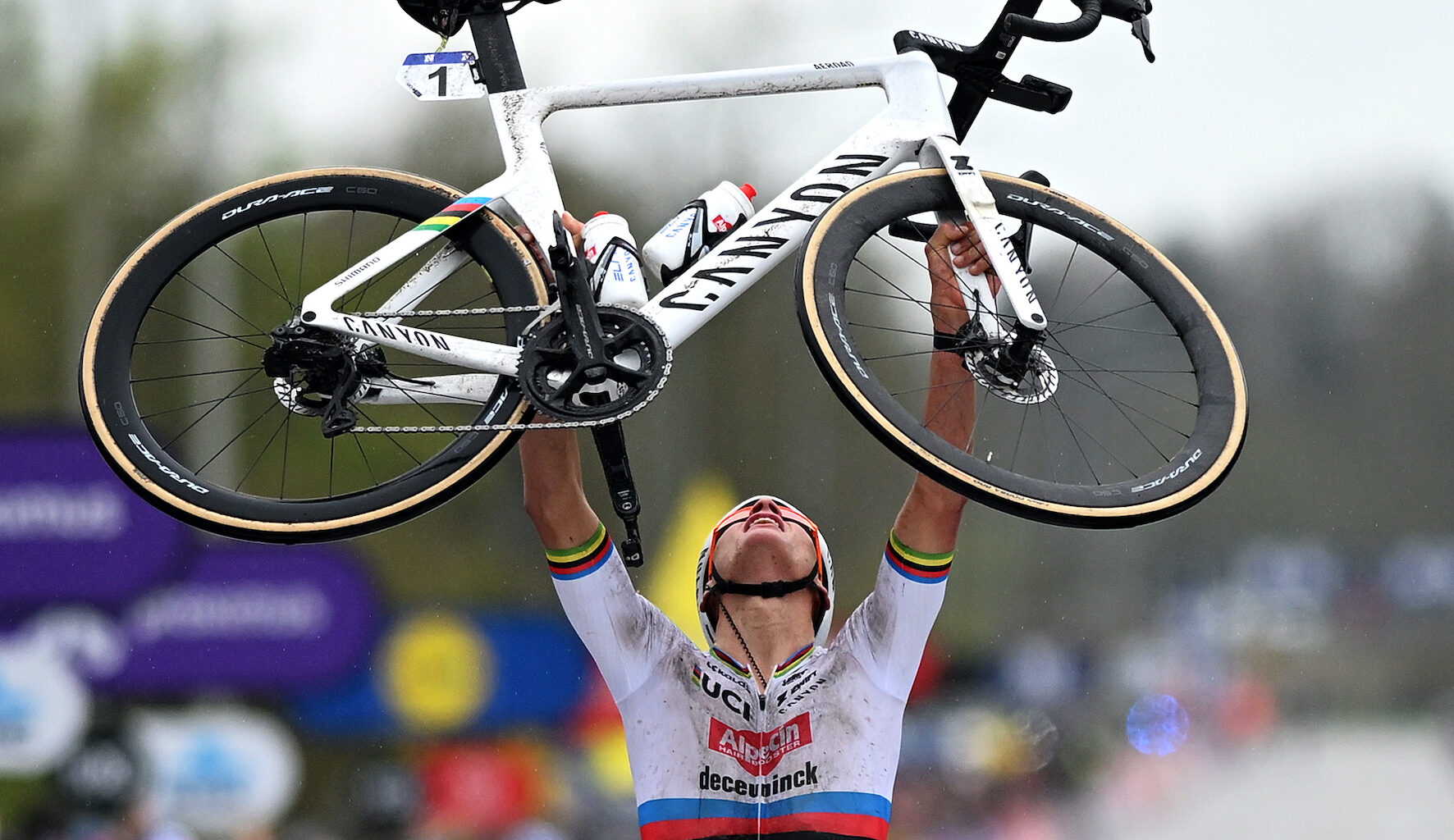Only 11 riders have won both the Tour of Flanders and Paris-Roubaix in the same year. The two biggest cobbled Classics in the calendar take place just a week apart, but it’s not common for a rider to be able to win both.
While they share their cobbled nature, Flanders and Roubaix are quite different. The French pavé sectors are far more harsh, with the cobblestones taller, regularly not even, separated by fairly substantial drops, and many of the roads have significant dips from vehicle tracks. Belgium however has the added factor of the cobbles coming on very steep climbs rather than flat stretches. Still, plenty of riders have both on their palmarès, but to do them in the same season is an incredible feat.
We’ve taken a look back through the archives to find out which riders have been able to do it, including two men who have completed the double double of winning both Flanders and Roubaix in the same year twice, and how a woman could be about to join the club for the first time.
Related questions you can explore with Ask Cyclist, our AI search engine. If you would like to ask your own question you just need to , or subscribe.
If you would like to ask your own question you just need to , or subscribe.
The early years
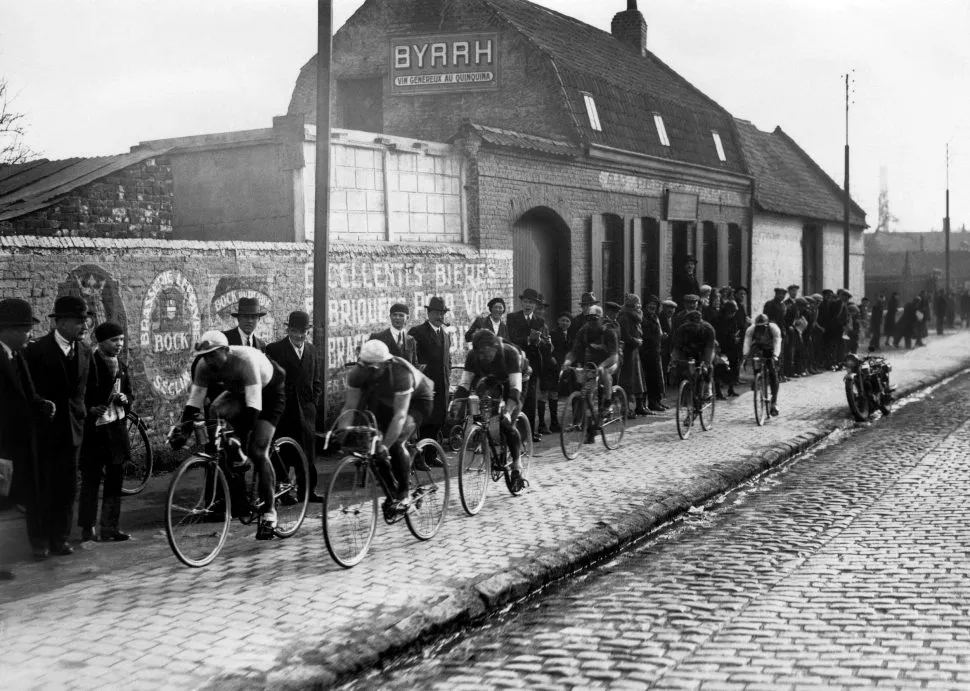 1934 Paris-RoubaixAFP via Getty Images
1934 Paris-RoubaixAFP via Getty Images
It took seven editions for a non-Belgian to win the Tour of Flanders, with Swiss rider Heiri Suter outsprinting two Belgians in the sprint in 1923 after the two climbs of the Tiegemberg and Kwaremont. He followed that by winning a bunch sprint at Paris-Roubaix a couple of weeks later to become the first man to complete the Flanders-Roubaix double.
Almost a decade would go by before the feat was repeated. Romain Gijssels went into the 1932 Ronde van Vlaanderen as defending champion and went solo to win by more than three minutes, while at Roubaix, he came to the finish as part of a four-man group but won the sprint to take the second Floubaix double.
Things would go slightly different for the third man to do it. In 1934, Gaston Rebry broke away to win Flanders before taking his second of three Roubaix titles a few weeks later – but he wasn’t the first to cross the line. Roger Lapébie initially won the race, but he did so after changing bike close to the finish before catching and passing Rebry and another rider. However the rules dictated that as he didn’t finish the race on the same bike he started on, the win had to be be awarded to second placed Rebry instead.
20 years would pass until the next occurrence. Raymond Impanis was part of a 22-man group at the Tour of Flanders in 1954, and they were all expecting a sprint finish. Impanis had other ideas though, launching a solo attack in the last 2km and staying clear by just a few hundred metres to take the victory. It would be even closer at Paris-Roubaix, his late attack sticking by just six seconds.
In 1956, Fred De Bruyne won three stages at the Tour de France, as well as Milan-San Remo, Liège-Bastogne-Liège and Paris-Nice, so it’s safe to say in 1957 he would’ve been a marked man. Yet, he still managed to pull off the double, winning Flanders and Roubaix in very different ways: at Flanders he won the sprint from a group of 11, and in Roubaix the following week he went on a successful 12km solo attack to win by over a minute.
A trio of Belgians
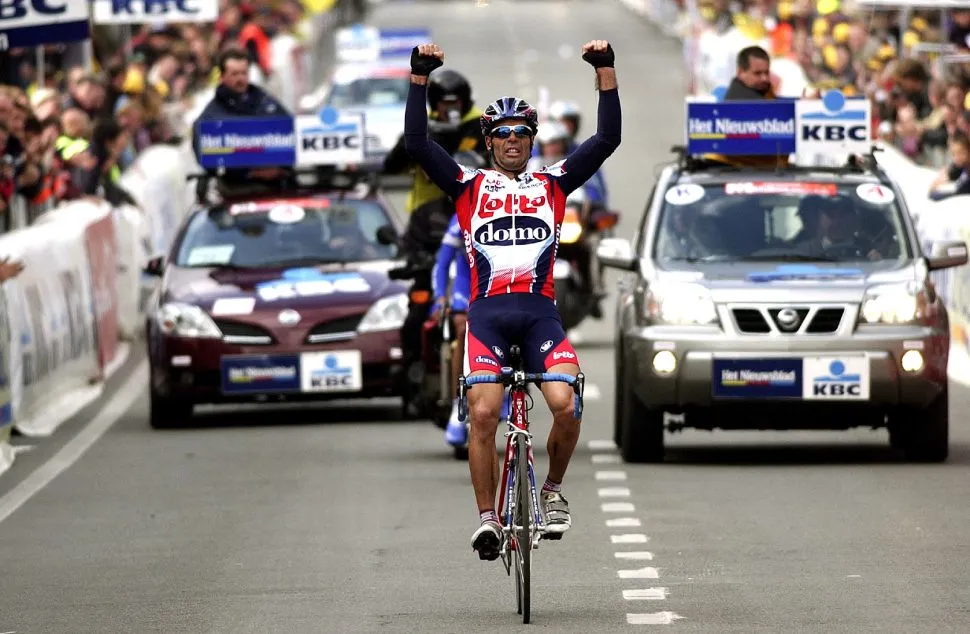 Tim De Waele/Getty Images
Tim De Waele/Getty Images
Classics strongman Rik Van Looy had a phenomenal 1961, winning the World Championships Road Race, Paris-Roubaix and Liège-Bastogne-Liège. In 1962, after riding to victory at Gent-Wevelgem, the Belgian won Flanders after a solo attack around 6km from the finish. As defending champion at Roubaix, Van Looy left it late, this time attacking from 3km out to win his second of three titles.
Another Belgian followed. Roger De Vlaeminck is widely regarded as one of the most talented Classics riders of his generation with a palmarès longer than War and Peace. He holds the title of being only one of three to achieve victories in all five Monuments alongside Van Looy and Eddy Merckx and, in 1977, rode to a Flanders-Roubaix double. At Flanders he won a two-man sprint against Freddy Maertens, who was then disqualified anyway for an illegal bike change. He was the man to beat at Paris-Roubaix, winning four editions between 1972 and 1977. For his last one – and to complete the double – he attacked with 25km to go and rode solo to the line.
It would be a long wait until the next double, almost three decades passing before Peter Van Petegem in 2003. In what was his second Flanders victory, the Belgian edged out compatriot Frank Vandenbroucke in the sprint. It was a similar situation at Roubaix where he beat Dario Pieri and Viatcheslav Ekimov in the dash to the line. This was his first win at Roubaix after finishing second behind Johan Museeuw in 2000.
The double doubles
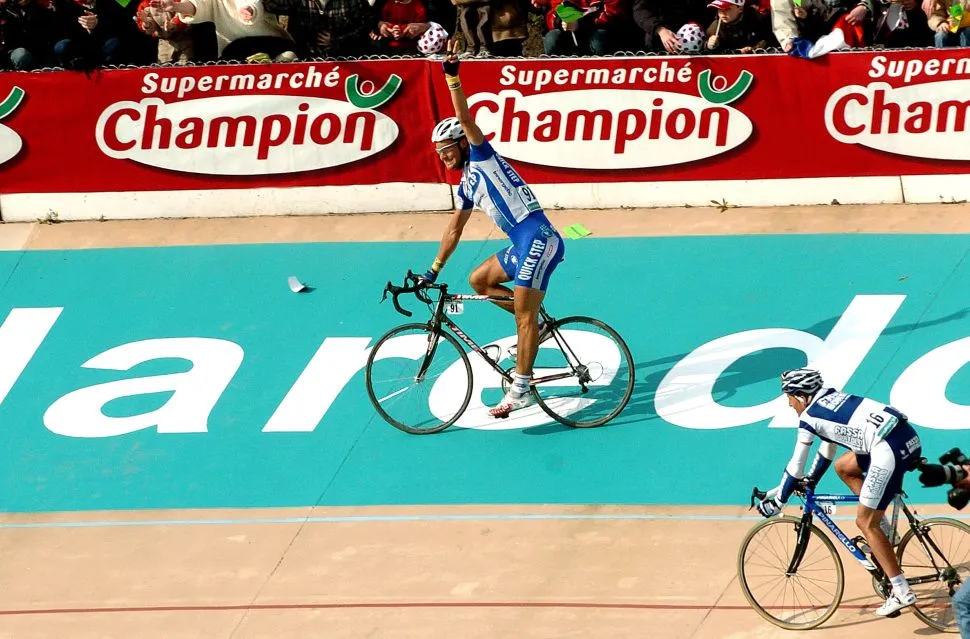 Tim De Waele/Getty Images
Tim De Waele/Getty Images
Two riders have achieved the double double of winning Flanders and Roubaix in the same year twice: Tom Boonen and Fabian Cancellara. The two were Classics dynamite, floating over the cobbles with ease.
Boonen took his first double in 2005. At Flanders he broke away from a group including Erik Zabel and Van Petegem on the Bosberg and rode solo to victory. At Roubaix, a five-man leading group became three on the Carrefour de l’Arbre sector and Boonen, on a frame apparently 3cm longer than normal, won the three-man sprint against George Hincapie and Juan Antonio Flecha.
His second double came in 2012, the year the Tour of Flanders route changed its finish from Meerbeke to Oudenaarde, swapping the Muur and Bosberg finale for the Kwaremont and the Paterberg. Boonen was part of another three-man group by the final ascent of the Kwaremont alongside Alessandro Ballan and Pippo Pozzato. Their lead grew after the Paterberg despite Peter Sagan’s efforts. Ballan did not contest the sprint so it became a head-to-head with Pozzato, and Boonen made no mistake. It was a very different story at Paris-Roubaix, where he staged a 53km solo attack on the Orchies sector. No one could catch him. Both victories equalled the all-time wins records.
Fabian Cancellara embraced the solo attack for his double double. The Swiss rider’s first Flanders victory came in 2010, when he dropped Boonen with an incredible seated effort on the Muur. At Paris-Roubaix that year he would secure his second of three wins by dropping the field on the Mons-en-Pévèle sector and would go solo for 46km to win.
Just three years later Cancellara took his second of three Flanders titles by breaking away on the final ascent of the Paterberg, while at Paris-Roubaix he had Sep Vanmarcke to contend with in the velodrome but took the win.
The most recent
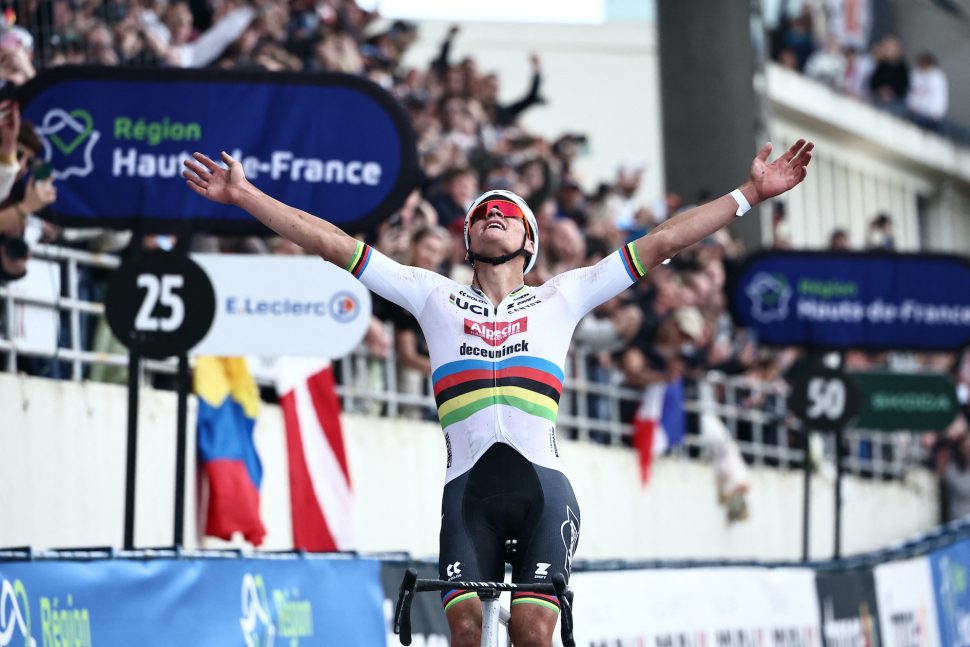 Anne-Christine Poujoulat/AFP
Anne-Christine Poujoulat/AFP
Mathieu van der Poel wrote his name in the history books by becoming not only the 11th rider to complete the double, but also by being the first not from Belgium or Switzerland. He dominated both races, winning with two enormous solo efforts while decked out in the rainbow jersey.
Lotte Kopecky and Tadej Pogačar both won Flanders this year, and both are set to line up at Roubaix to go for the double. Should Kopecky complete the double, she’d become the first woman to do so, and the odds look to be in her favour.
Pogačar is set to make his debut at the race, so how he fares is anyone’s guess, but if he does win, the double will only be a footnote in the post-race discussion.
